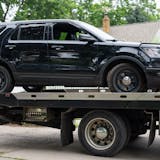Transit planners say two major Xcel Energy underground electric transmission lines will need to be moved to make way for the $3 billion Blue Line light-rail extension in Minneapolis’ North Loop neighborhood. The recent disclosure has raised questions about the cost and time needed to move the lines, which provide power to parts of downtown Minneapolis.
Officials with the Metropolitan Council and Hennepin County say they’re confident a solution can be reached with Xcel, and that these kinds of discoveries are routine when building a major transit project in a complex urban environment.
“We look at it as just normal coordination [with utilities], although this one takes a little more work,” said Nick Landwer, Metro Transit’s director of transit system design and engineering. “We’re working with the Xcel team to simplify how to get the work done. It doesn’t pose an issue at all.”
Project opponents were not appeased: “It’s just another example of the Met Council not doing their due diligence on these projects,” said Matt Bruns, who lives in the 918 Lofts along 10th Avenue, now part of the Blue Line extension route in the North Loop.
Xcel’s transmission lines run under 10th Avenue between 7th Street and Washington Avenue, part of which is expected to be used as a transit mall for light-rail trains and a bike and pedestrian trail. Vehicle traffic will be rerouted elsewhere in the area, although it’s not known yet where.
The North Loop stretch is a relatively late addition to the project’s route after Lyn Park residents complained two years ago about the previous alignment along Lyndale Avenue, west of Interstate 94. The overall 13.5-mile route, which stretches from Target Field to Brooklyn Park through north Minneapolis, Robbinsdale and Crystal, is expected to begin service in 2030.
Because Xcel’s transmission lines are located in a public right of way — in this case a city street — the utility will assume the cost to move them, said Dan Soler, Hennepin County’s director of transit and mobility.
At this point, officials are unclear how much that would cost. The project has a bottom line estimated at $2.9 billion to $3.2 billion.Construction is expected to begin in 2027.



